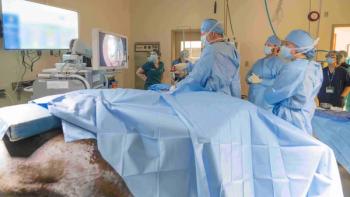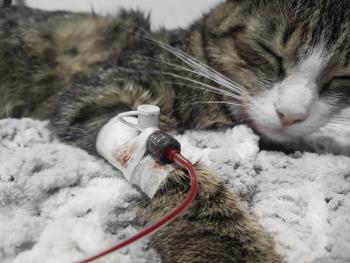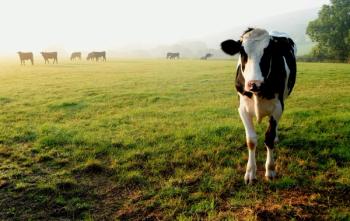
Anesthesia and analgesia for exotic animals (Proceedings)
Clinicians working with "exotic species" should establish consistent anesthetic and analgesic protocols to manage cases that require diagnostic or surgical procedures.
Clinicians working with "exotic species" should establish consistent anesthetic and analgesic protocols to manage cases that require diagnostic or surgical procedures. Unfortunately, there are still individuals that attempt to manage these cases using "bruticaine" or hypothermia (e.g., placing reptiles into a refrigerator or freezer). These techniques are not only cruel, but can prove fatal. Advances in domestic animal anesthesiology have provided safer, consistent compounds that may be used to anesthetize exotic species.
A patient should receive a thorough examination, including auscultation of the heart and lung(s), prior to any anesthetic procedure. In those cases where auscultation is limited, such as with reptiles, an ultrasonic doppler may be used to assess the heart. Pre-surgical blood work, which is commonly performed in domestic species, can provide insight into the physiological status of an animal. A complete blood count and plasma chemistry panel should be performed when possible. In cases where blood volume or owner finances are limited, a packed cell volume, total solids, and blood smear can be performed to provide important information regarding the animal's status.
Ectotherms, such as reptiles and amphibians, should be provided supplemental heat during an anesthetic procedure that is consistent with their preferred environmental temperature. Endotherms, including birds and exotic species of mammals, should also be provided supplemental heat during these procedures. Hypothermia in endotherms can result in the loss of essential energy to maintain an appropriate core body temperature. Animals maintained at an inappropriate temperature will experience a prolonged recovery. Water-circulating heat pads and forced air heating units provide good results and are unlikely to cause thermal burns. Radiant heat from an incandescent light can also be used to provide supplemental heat.
Variability in the physiology of exotic species often results in variable responses between classes of animals. For example, anesthetics that provide surgical anesthesia in a mammal or bird may provide little to no anesthesia in a reptile or amphibian. Differences in anesthetic responses within animal classes have also been described. The anesthetic agents that have been found to provide the most reliable results in exotic species include the dissociatives, alpha-2 agonists, propofol, and inhalant anesthetics.
Dissociative agents are routinely used to anesthetize reptiles and rabbits. The most common dissociative agents used for reptile anesthesia are ketamine (Ketaset, Ft. Dodge Laboratories, Ft. Dodge, IA, USA) and tiletamine (Telazol, Fort Dodge Laboratories, Ft. Dodge, IA, USA), while ketamine is the preferred agent for rabbits. Reported dosages for ketamine are quite varied. When a short, painless procedures (e.g., examination) or pre-anesthetic is required (e.g., facilitate intubation) for reptiles, a dose between 10-30 mg/kg IM is sufficient. Ketamine provides minimal analgesia and should be combined with an analgesic when a painful procedure is performed. A dose of 55-88 mg/kg IM has been recommended for surgical anesthesia in reptiles, but ketamine is inappropriate as a sole anesthetic in a surgical procedure. Ketamine is generally used in combination with alpha-2 agonists in rabbits. If used alone, a dose from 15-30 mg/kg may be used, whereas the dose can be reduced when the drug is used in combination with an alpha-2 agonist. Side effects reported with ketamine usage include respiratory arrest, bradycardia, skin depigmentation, and prolonged recoveries. These side effects are usually associated with the administration of high doses (>80 mg/kg). Tiletamine is more potent than ketamine and provides similar results at a lower dose in reptiles (3-8 mg/kg). The addition of zolazepam is of benefit because it improves muscle relaxation and is an anticonvulsant. Tiletamine has been used in snakes, lizards and crocodilians with some success, but recoveries are still prolonged. Tiletamine should only be used for short, painless procedures or as a pre-anesthetic as it provides limited analgesia. The dissociatives have been used in birds, but generally result in violent recoveries.
The alpha-2 agonists, including xylazine and medetomidine, have been used with good success in exotic species. In general, they are used in combination with other drugs. Of the two drugs, medetomidine is used more frequently because of its greater effect and potency in exotic species. Medetomidine provides muscle relaxation, analgesia and is reversible with atipamezole. The primary side effect associated with this drug is cardiopulmonary depression.
Propofol is a non-barbiturate anesthetic agent that can be used to provide general anesthesia. Propofol is readily metabolized, has no cumulative effect, and provides approximately 10-45 minutes of anesthesia. To be effective, propofol must be administered intravenously (IV) or intraosseusly (IO). The author has been able to anesthetize amphibians using the intracoelomic route, but the dose is much higher (35 mg/kg) than the IV dose. A dose of 10-15 mg/kg IV will provide general anesthesia in birds, mammals, and reptiles. Additional boluses of propofol may be necessary during a procedure. Because propofol is a respiratory depressant, the patient should be intubated and ventilated.
Inhalant anesthetics are still considered the gold standard for anesthesia. The primary advantage of the inhalant anesthetics is that delivery is controlled via a precision vaporizer. The most common inhalant anesthetics used in veterinary practice are halothane and isoflurane. Exotic species, like domestic species, should be intubated to ensure consistent delivery of the anesthetic. Birds, chelonians, and crocodilians have closed tracheal rings and should be intubated with a non-cuffed endotracheal tube. Intubating a reptile or bird is a simple procedure because the glottis is located on the floor of the mouth. Intubating lagomorphs can be very difficult because of their long, narrow oral cavity. The author prefers to intubate rabbits with the assistance of an endoscope. Birds and reptiles under general anesthesia may become apneic during the procedure and should be ventilated using intermittent positive pressure. Typically, 4-6 breaths per minute at a pressure less than 12 cm of water is satisfactory. Non-rebreathing systems are appropriate for animals under 5 kg.
Exotic species should be monitored during an anesthetic procedure using standard procedures. Breathing can be monitored by observing contraction of the body wall, or with the assistance of an audible respiratory monitor. Auscultation of the heart is difficult, if not impossible, in reptiles. Esophageal stethoscopes may be used to monitor the heart rate in larger species, but are impractical in smaller animals. An ultrasonic doppler produces an audible sound that insures cardiac function. An electrocardiogram (ECG) can also be used to monitor heart rate and rhythm. The pulse oximeter is a monitoring device that continues to gain popularity in veterinary medicine because it enables the anesthetist to monitor both heart rate and oxygen saturation. There are a number of different monitoring probes that can be purchased with these systems. Although these devices simplify anesthetic monitoring, placement and re-positioning may be required during the procedure. Mucous membrane color and hydration status of the patient should also be monitored during the surgical procedure. Any animal that experiences significant blood loss during a procedure should be given fluids (e.g. intravenous or intraosseous). Recovery from an anesthetic procedure should take place in a warm, dark, quiet area.
Newsletter
From exam room tips to practice management insights, get trusted veterinary news delivered straight to your inbox—subscribe to dvm360.




